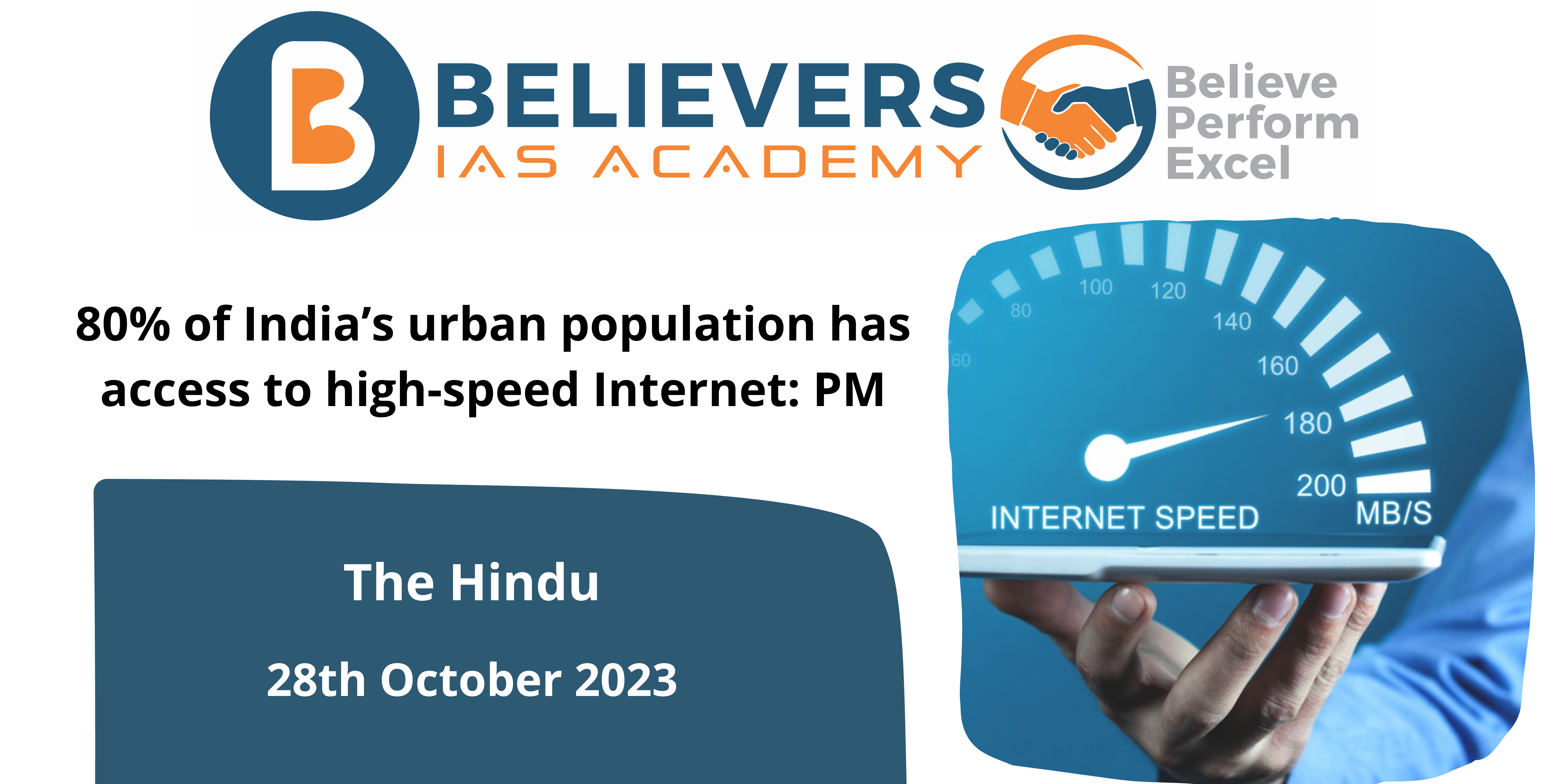80% of India’s urban population has access to high-speed Internet: PM
Context
On Friday, Prime Minister Narendra Modi praised telecom operators’ achievement in expanding 5G service in urban areas, claiming that more than 80% of India’s urban population now had access to high-speed technology.
What is the historical context behind the Internet in India?
- In India, the Internet’s history began in 1986 with the establishment of the Educational Research Network (ERNET). The Department of Electronics (DOE) and the United Nations Development Program (UNDP) collaborated on the ERNET. Initially, the Internet was primarily available to academic and scientific institutions.
- On August 14, 1995, the state-owned Videsh Sanchar Nigam Limited (VSNL) established India’s first publicly available internet service. Officially, the service was known as the GIAS, Gateway Internet Access Service, or dial-up Internet.
- Some of the important turning points in the field of the Internet in India:
- 1996: Rediff.com opened India’s first cyber cafe in Mumbai
- 1997: ICICI Bank started online banking
- 1998: NASSCOM was established and private ISPs were allowed to set up shop
- 2022: 52% of the Indian population, or 759 million people, accessed the internet at least once a month
What is the current status of the Internet in India?
- PM Modi lauded telecom companies’ progress in increasing 5G coverage in India’s cities.
- He stated that 5G technology is already available to more than 80% of India’s urban population.
- Within a year of the 5G debut, roughly 4 lakh (400,000) 5G base stations were deployed in India, suggesting a significant 5G infrastructure rollout.
What is the impact of the success of 5G on the daily life of the common man?
- PM Modi stressed that enhancing internet connectivity and speed goes beyond statistics to improve people’s quality of life.
- He emphasized how faster internet allows students to communicate with their lecturers online, patients to have flawless telemedicine experiences, and tourists to simply navigate using online maps.
What is the next step in the field of the Internet spectrum?
- The Prime Minister stated that India is not just expanding 5G but is also working to become a leader in 6G.
- This demonstrates India’s commitment to remaining at the cutting edge of telecommunications technology and innovation.
What are the benefits of this advancement in the Internet field?
- Faster More Reliable access: With technologies such as 5G and 6G, internet access becomes much quicker and more reliable. This means speedier downloads, faster access to internet resources, and smoother streaming experiences.
- Improved Mobile Experiences: Improved internet speeds benefit mobile devices, resulting in greater performance for apps, mobile gaming, video streaming, and other activities.
- IoT and Smart Devices: High-speed, low-latency networks, such as 5G and 6G, are critical for the Internet of Things (IoT) and smart devices. They enable seamless communication between devices, resulting in more efficient and integrated smart homes, cities, and industries.
- Telemedicine and healthcare: Better connectivity enables more comprehensive telemedicine options, such as remote consultations, diagnostics, and monitoring. This is especially critical in underserved or remote locations.
- Online Education: Faster internet speeds make online learning more accessible and interactive. Students can attend virtual classrooms, access educational resources, and collaborate more effectively with peers and educators.
- Emerging Technologies: High-speed internet is required for new technologies such as augmented reality (AR) and virtual reality (VR). These technologies are used in education, entertainment, and a variety of businesses.
- Entertainment and Media: Consumers profit from high-quality streaming services, virtual reality experiences, and immersive content delivery in the entertainment and media industries.
- Industry & Manufacturing: Improving connection is critical for industry automation, robots, and the Industrial Internet of Things (IIoT), all of which lead to higher production and efficiency.
- Research and Development: Advanced networks facilitate collaborative research and data-intensive projects in R&D. They allow for real-time data sharing and analysis, which benefits scientific research, medicines, and other industries.
Conclusion
In summary, PM Modi’s speech at the India Mobile Congress highlighted India’s progress in 5G deployment, its focus on increasing the quality of life through better connectivity, 6G research initiatives, and domestic electronics manufacturing achievements. It also emphasized the significance of safeguarding supply networks in the technology industry.




